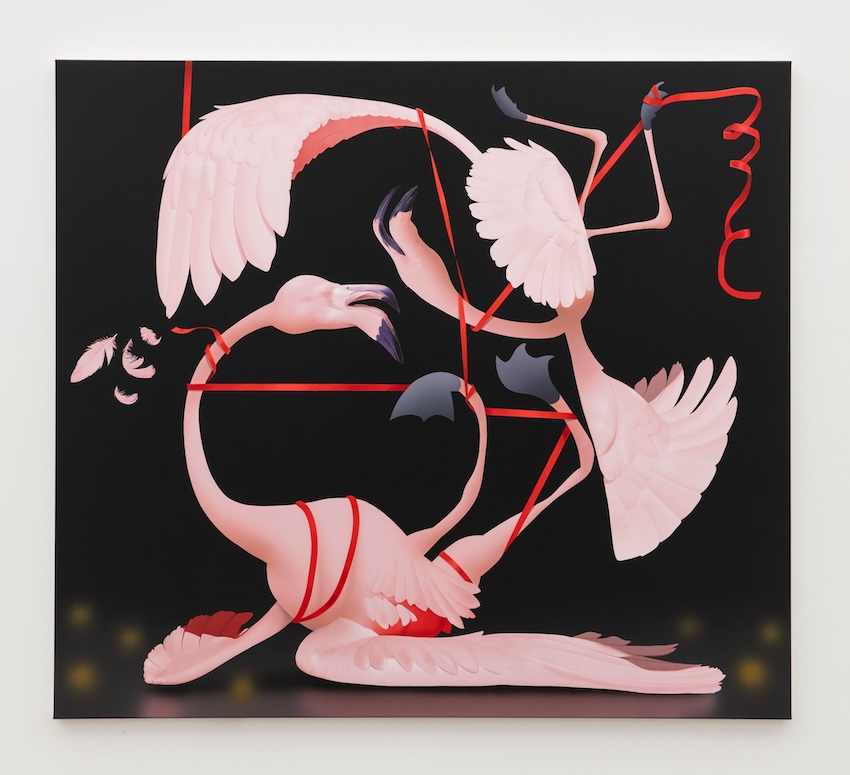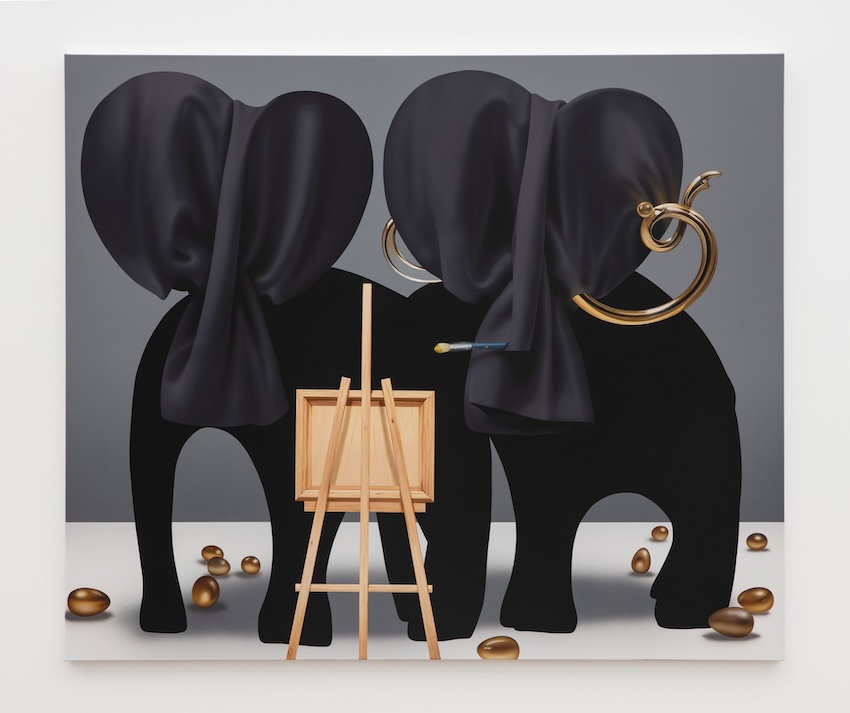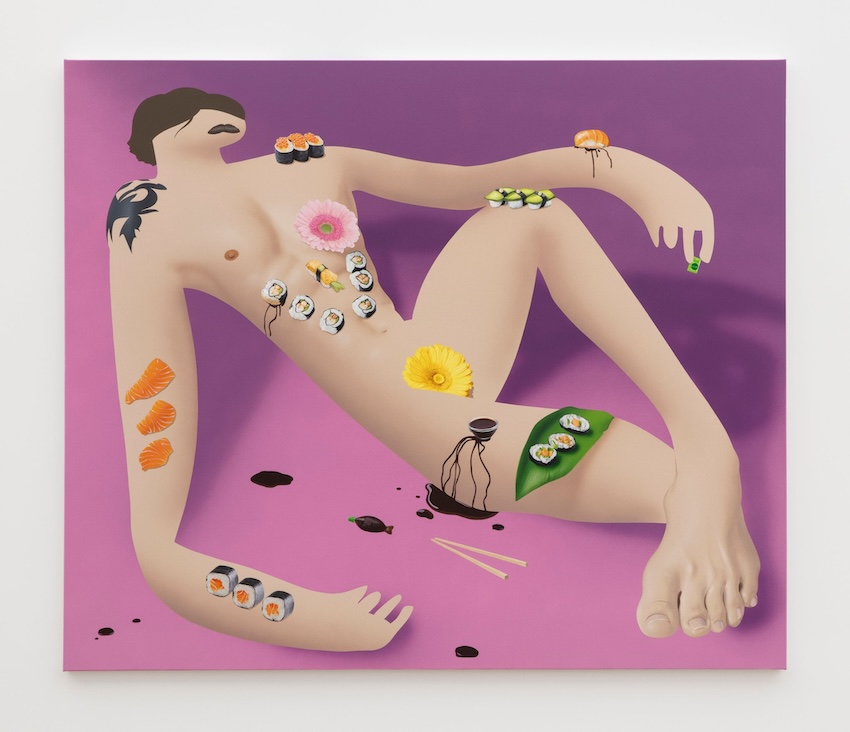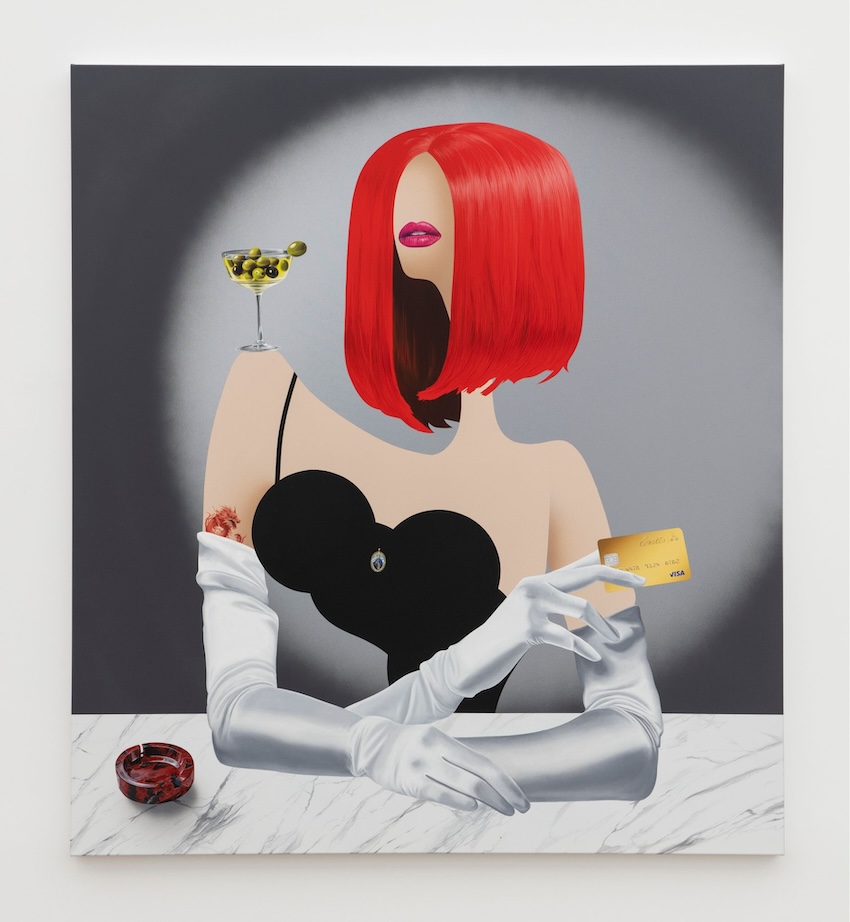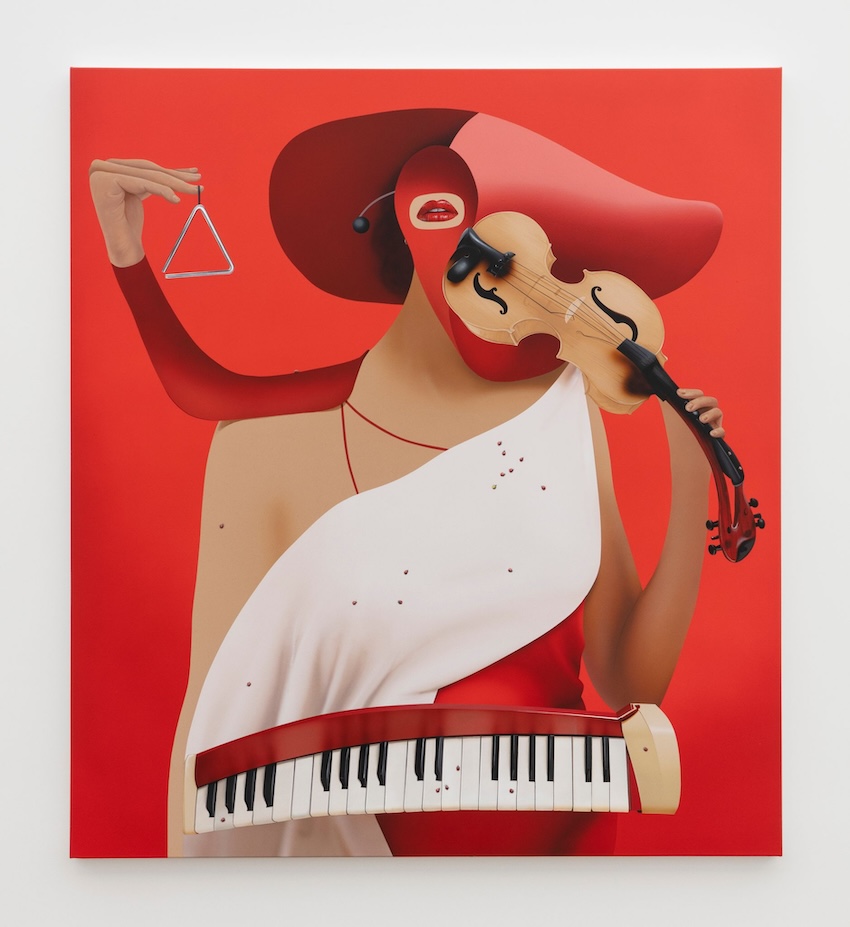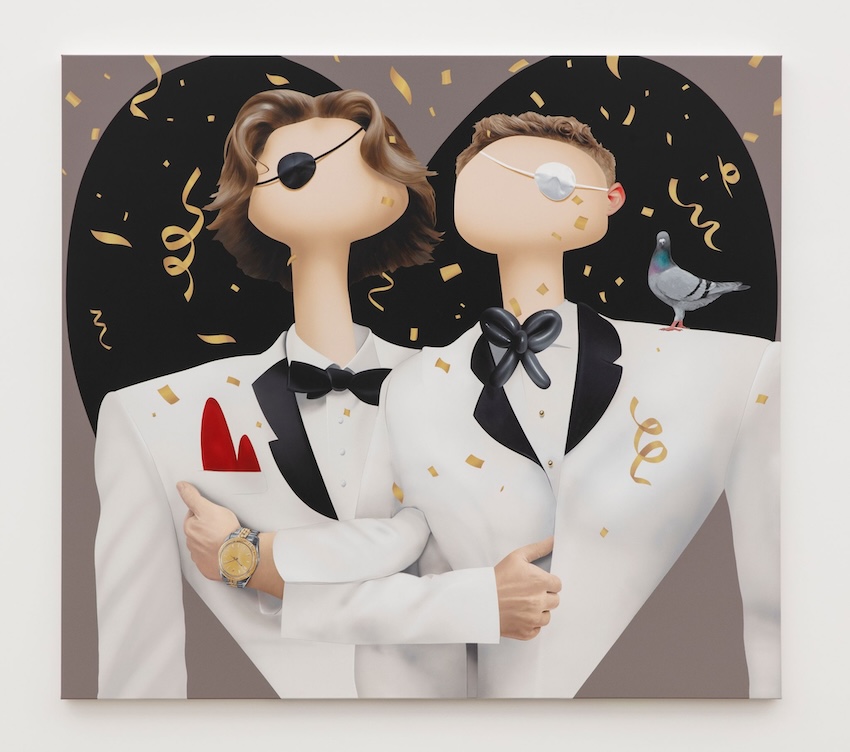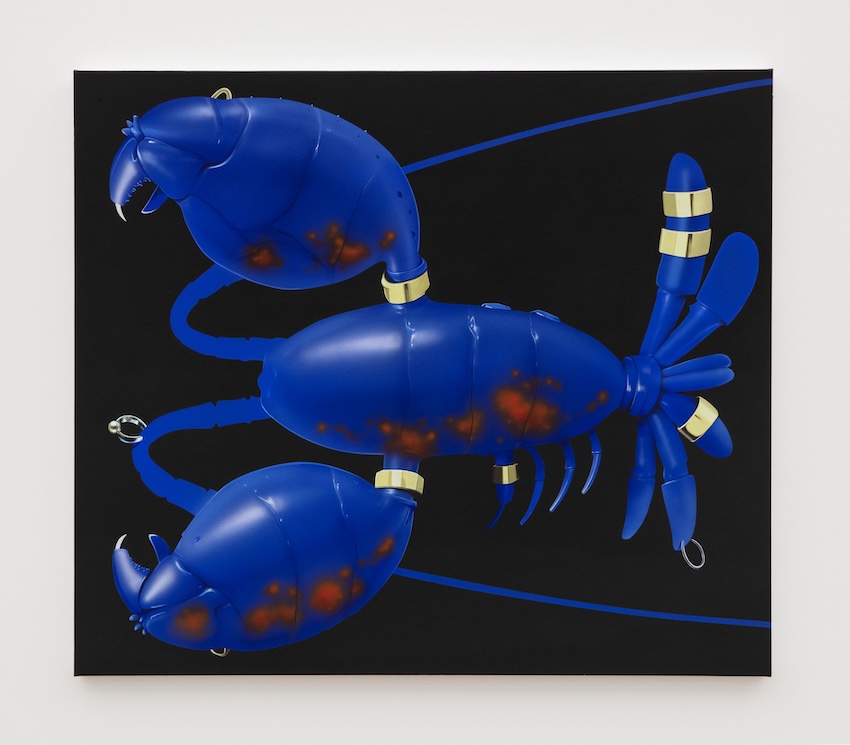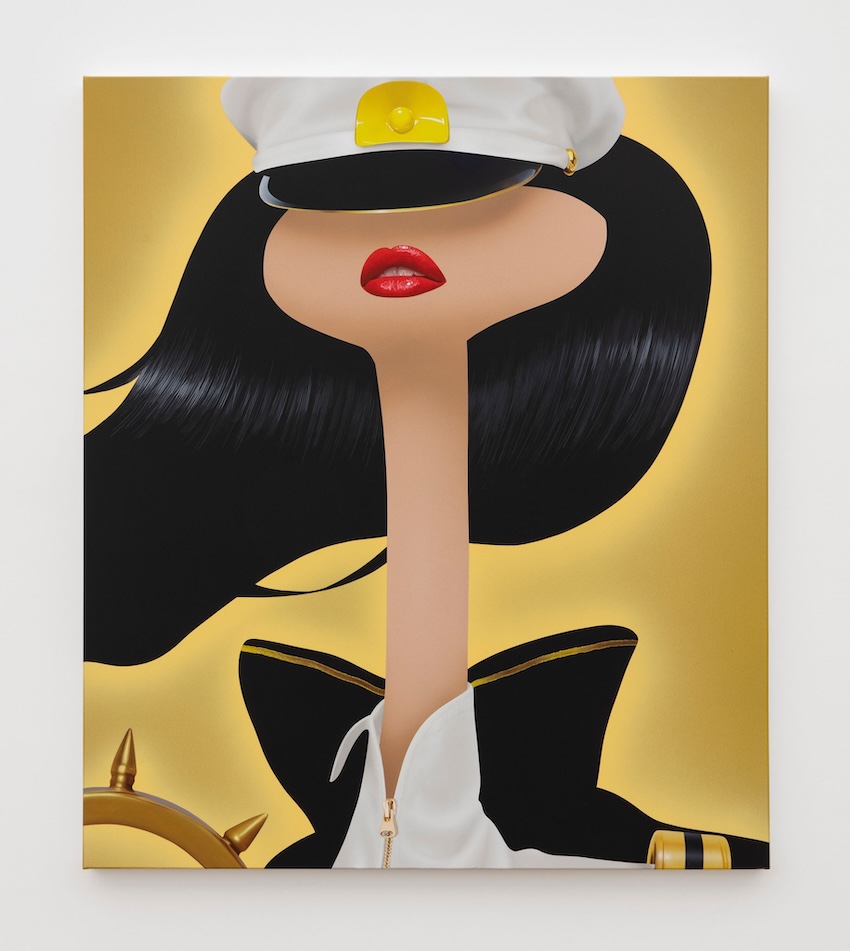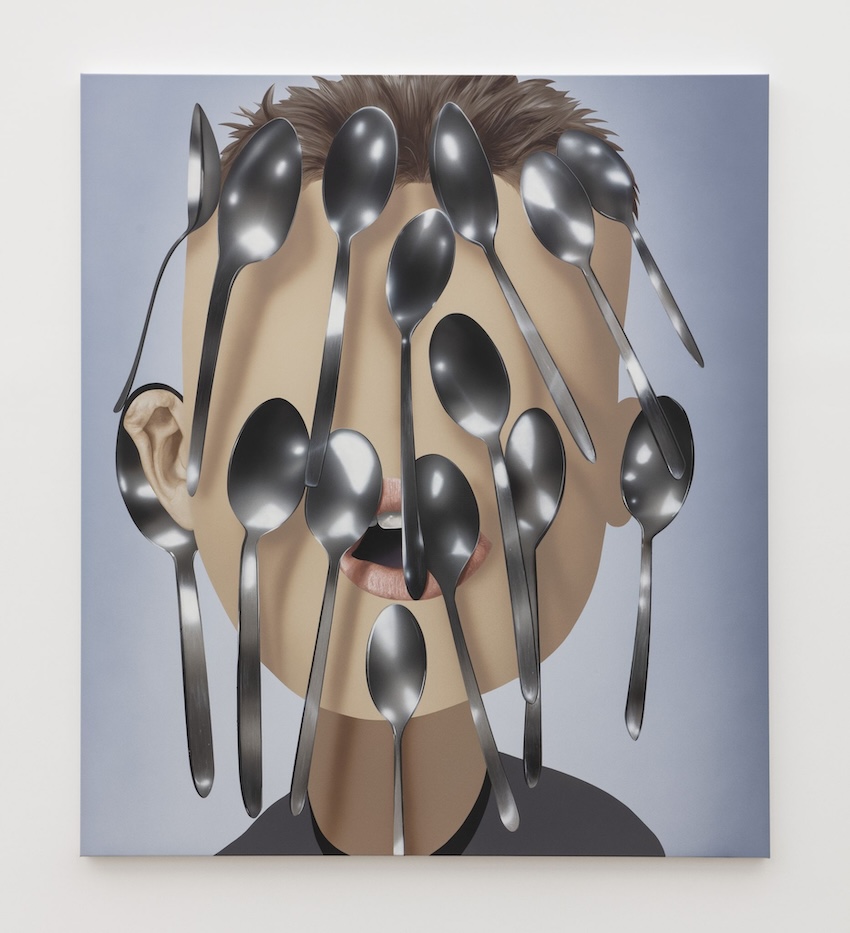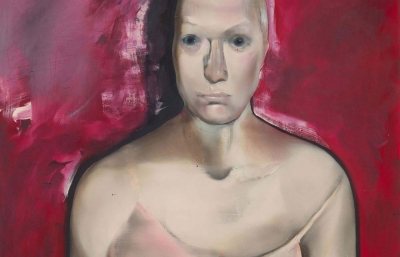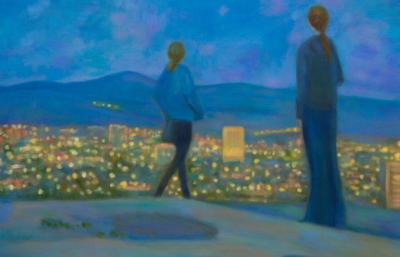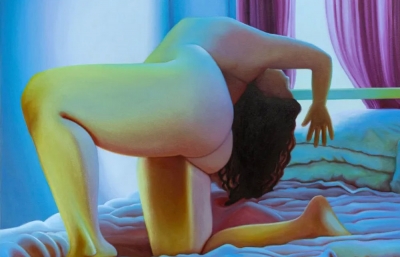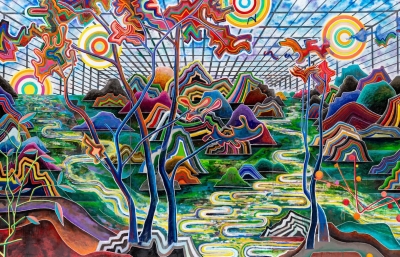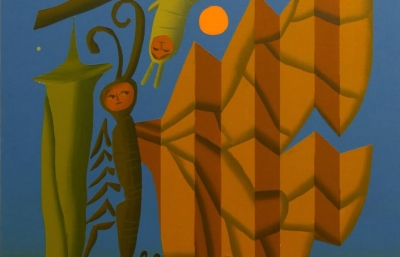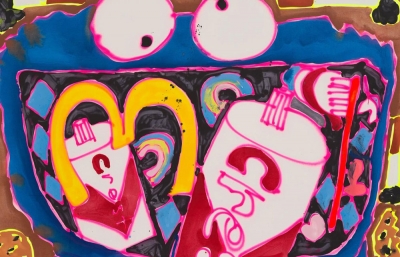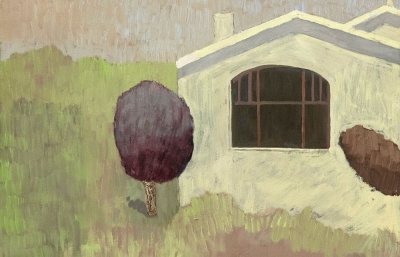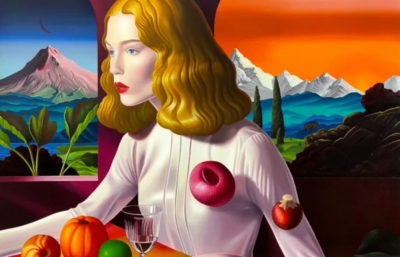Perrotin is pleased to present the gallery’s second exhibition with London-based painter Oli Epp, titled Fire the Menu. Presenting a new suite of surrealist paintings, he depicts opulence as performance and captures the unsaid paradoxes the inhabit our lavish desires.
Oli Epp’s kitchen is a microcosm of his imaginative universe. Between the collectible Bill Bell McDonald’s plates and cat-shaped and designer teapots, there is a delicate wooden pantry filled floor to ceiling with candy. The shelves overflow with kiwi Hi-Chews, gummy ropes, bite-sized chocolate bars, and even a gumball machine containing peanut M&M's. Smiling through straight, white teeth—a testament to his mother's profession as a dentist—Epp eagerly invites visitors to take as much as they want. This scene is emblematic of Epp's artwork, where the allure of glistening sweets serves as a potent symbol. The candy, with its bright colors and immediate gratification, mirrors the seductive surfaces and tantalizing details of his paintings. Yet, beneath this sugary exterior lies a deeper commentary on desire, consumption, and the fleeting pleasures of contemporary life.
Born in 1994 in London, Oli Epp studied at the City & Guilds of London Art School. His unique artistic process involves meticulous planning— from initial sketches to the final layers of paint, creating works that blend humor and critique. Epp’s paintings start as instinctive drawings and pass through digital manipulation before being realized on canvas with oil, acrylic, and airbrush. His works pop with vivid color and sharp lines, creating a pleasing visual experience that belies the underlying anxiety about the human condition.
The show’s title, Fire the Menu, references the restaurant terminology for ordering an entire menu, connoting a lavish yet gluttonous event. In the series, Epp prepared a feast for the senses, a visually opulent and surreal exploration of extravagance and contradiction. Epp's paintings, with their oneiric quality, can be read as a dialectic of the visible and the concealed, a commentary on the interplay between the superficiality of appearances and the depth of human experience. His works engage with the absurdity of excess and the spectacle of performance, presenting a reality that is at once heightened and splintered.
Drawing on the aesthetics of popular media and the omnipresent digital landscape, Epp’s canvases are a theater of desire and consumption, manifesting in sumptuous sushi rolls, sleek pop-star body mics, and glamorous silk gloves. His art captures the frenzied, kaleidoscopic essence of contemporary life, embedding human and animal forms within a fragmented narrative that oscillates between fascination and unease, intimacy and alienation. By distorting reality, Epp reveals deeper truths, challenging viewers to question the veracity of their perceptions in an era where fact and fiction are constantly interwoven by technology and media.
In contrast to his earlier works, which often featured modern technology, in Fire the Menu technology is conspicuously absent. Instead, Epp employs symbols of classical technique—string instruments, wooden easels, acrobatics, and the faint footlights of a stage. This shift in focus underscores a deeper exploration of the tools and performances that shape contemporary culture. By omitting direct references to modern technology, Epp brings attention to the enduring and performative aspects of human expression, creating a dialogue between past and present methods of producing and consuming art. This transition from high-tech to classical forms emphasizes the timeless nature of artistic practice and its role in defining cultural narratives.
Epp's process reflects the dialogue of technique in a sort of material ballet, incorporating digital and traditional media, his brushstrokes are precise, lines are sharp, and colors are bold. His large-scale canvases juxtapose the hyper realistic textures and sheen of matte acrylics with elongated forms and conjoining or sprouting members. The paintings appear to be in a state of transition between liquid and solid, transparent and opaque, and this dynamic interplay is reflected in the compositions themselves, as they veer into the deep end of his consciousness.
Epp describes the paintings in this exhibition as gentle struggles and quiet suffering, presenting images that are simultaneously alluring and uncanny. Each painting tells a different tale, creating contemporary allegories that celebrate and critique consumer culture. In Rivalry, two flamingos are depicted tangled in a red ribbon. Their eyeless faces, perhaps devoid of soul, struggle to perform their signature grace and exoticism but are ensnared by their adornments. The contorted birds are a cautionary tale of the impossibility of equilibrium and the futile efforts to maintain appearances in a world obsessed with spectacle.
In another work, The Great Unveiling, Epp enlists the elephant’s heart-shaped silhouette to conjure symbols of wisdom and emotion. Yet, portrayed shrouded at a wooden easel, seemingly forced to paint, the famously emotive and powerful creatures are reduced to performing circus tricks, producing golden eggs that litter the floor. Epp has commented that this painting is slightly autobiographical, reflecting the pressures of artistic production and the commodification of creative output.
Epp’s ability to blend critique with visual appeal makes his work both accessible and thought-provoking. The artist invites us all to “take as much as we want” – to indulge, but with a twinkle-toothed reminder of the paradoxes that animate his artistic universe. Beneath the surface, everything is masked: a lobster swathed in golden jewelry, a naked body obscured by sushi— all of it an absurd yet calculated performance. It’s all there, tangled up in contradictions, bow-like arms and legs or a one-woman band playing every instrument at once. Nothing is as it seems, but everything is exactly what you want. Fire the Menu is a testament to Epp’s evolving artistic practice and his ongoing exploration of the complexities and decadence of contemporary life.





